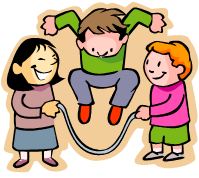Leadership

QoTD
Are We There Yet!
Udayakumar Nalinasekaren
Feb 13, 2011

Recently I saw a mom and a small kid in a mega mall. The mom was busy shopping. The child had a simple question about something he saw in the mall. He asked the mom. The mom was not paying attention and the child kept repeating the same question in rapid succession till he got the attention of the mom.
However, these days as an adult, I do travel a lot strapped to a seat and I am comfortable and preoccupied with myself (like many other adults around me) for several hours in a row. The point is, as we grow up, we do know more. We also tend to contain some of these useful tools (curiosity, spontaneity and impatience) that play a vital role to nurture learning, in an effort to create a socially acceptable facade.
In childhood, with a relatively blank mind, we have a lot to learn. We are eager to learn. We want to move around, play, touch and feel the world, and experience the world around us for the first time. We cherish such experiential learning. Learning while having fun and remaining safe is the only responsibility assigned to us in early childhood.
As we grow, we are introduced to and we adjust to structure and governance. Simple examples are that of a classroom, a time table, and formal learning categorized by subjects. Most of us hate such structure and governance but learn to live with it by creating our own model around it. That is the first step to learning to live with a model – our own version of the world.
We grow further to take up more and more roles and responsibilities. We have already grown a mature model of the world in our mind. This model is full of beliefs, characterizations of how things (and people) behave. The model is constructed out of ideas of what will work and not work. We deliver our responsibilities around that mental model. Two things happen. Firstly, our mental model has the side effect of making us pre-judge and therefore inhibits any further learning. We no longer want to touch and feel the world. We lose our spontaneity. Secondly, we fill our mind with transactions of things to be done and not done. Sometimes transactions start the worry loop which further stumps productive mental bandwidth.
If we throw our mental models to the trash can and experience the world afresh each morning, if we want to learn from everything and everyone around us as if it is the first time and if we can bring back the spontaneity of the child in us and use it effectively to deliver our adult roles and responsibilities, we will lead a better life. The world has indeed changed a lot in the time you spent reading this post and there is a lot to learn from that change.
My Artwork
Coming soon...Latest Blog Posts
Coming Soon
Archives
Search



